ehonda187
Active member
Thought I would post a little something that I put together this afternoon. It's so easy to make this worm bin and takes no time to put it together. All you need is stuff from around the house and some composting worms (Eisenia Fetida, Red worms) In no time you can turn kitchen scraps into worm castings for your garden.
First, you will need a couple of bins for this set up. One bin for the vermicompost and one for the reservoir, I am using these 10 gallon bins I had around the house that I picked up for 2 dollars a piece on sale.
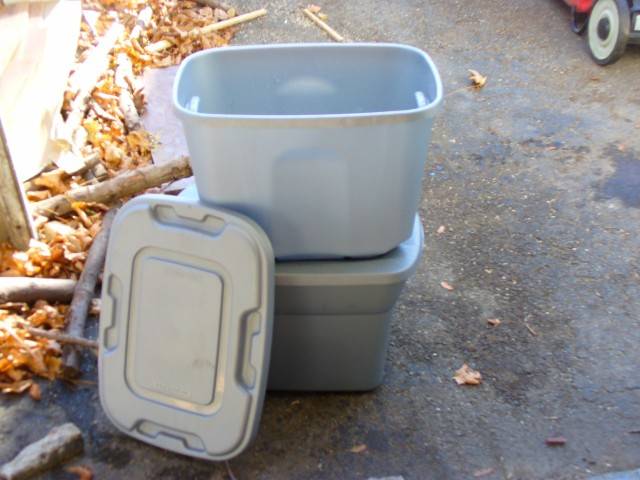
Next, you take a 1/8 inch drill bit and put in some air holes both in the lid and into the sides to ventilate the wigglers environment. You don't want the holes too big or the worms will migrate out of the bin.
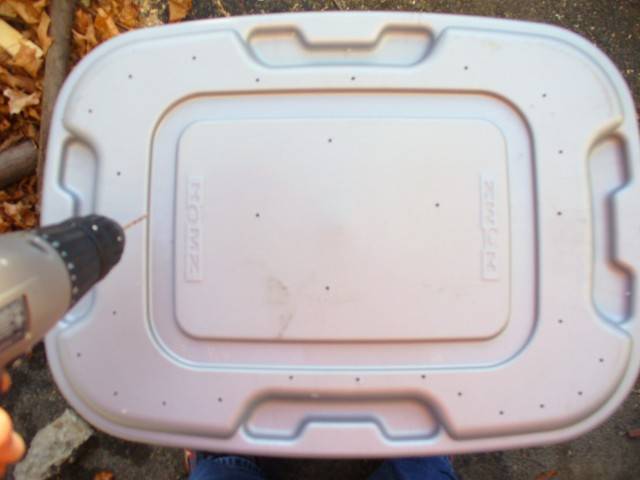
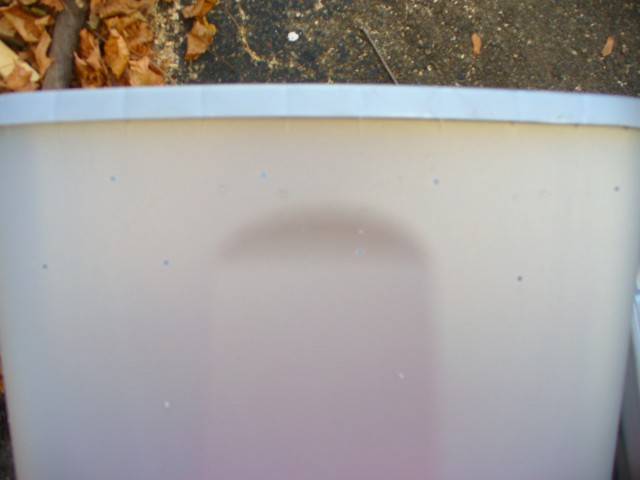
Next, Put a few holes into the bottom of the top bin to allow drainage into the reservoir. Just a few now, or they will fall into drink.
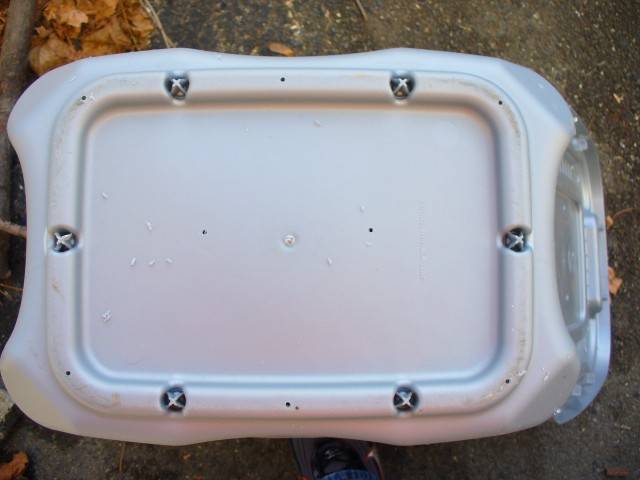
Bin Complete!
Now put a couple of bricks in the reservoir and put the top bin into it and your ready to fill it up with some bedding.
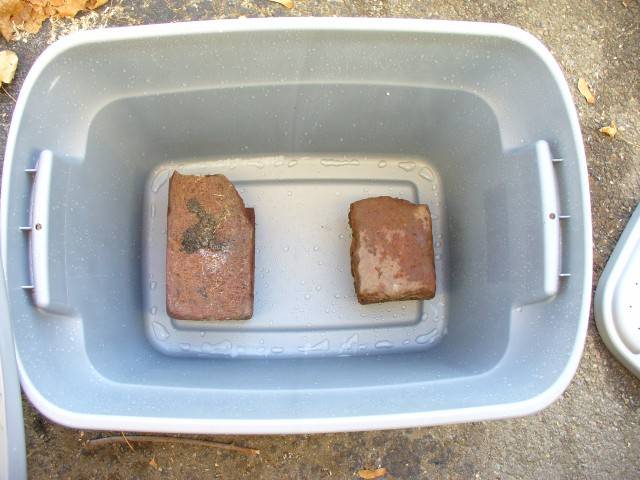
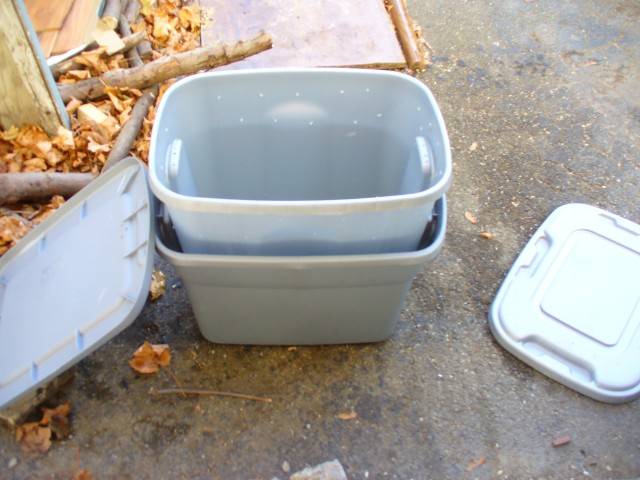
The bedding I used was shredded newspaper, crumbled leaves, shredded cardboard, and you will need some dirt, a couple of cups full for the worms sake. The dirt is for the digestive system of the worm, They need the dirt to grind the food within the gizzard and as well as it supplies the bin with some beneficial microbes.
Get it all in all in there, right to the top. Then wet it all down. Worms need a moist environment since they transpire through the their skin. Not too wet now.
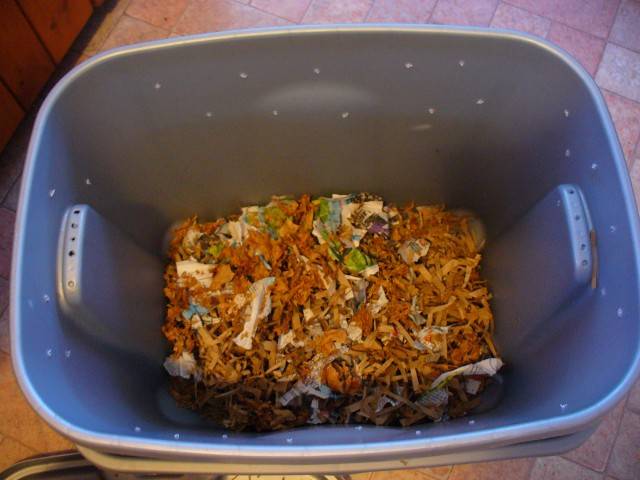
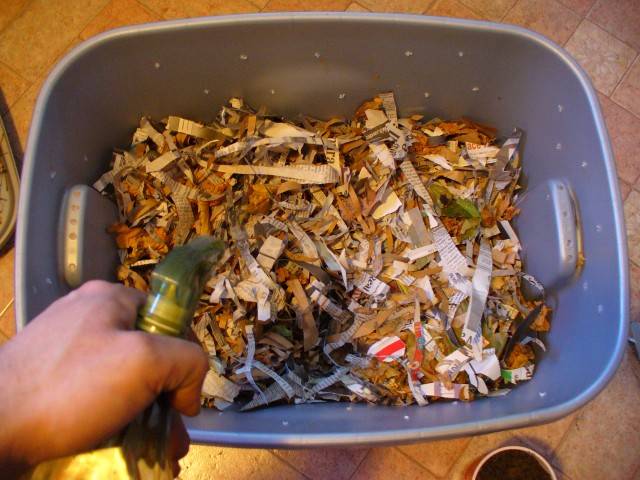
Then add the Dirt and mix it up!
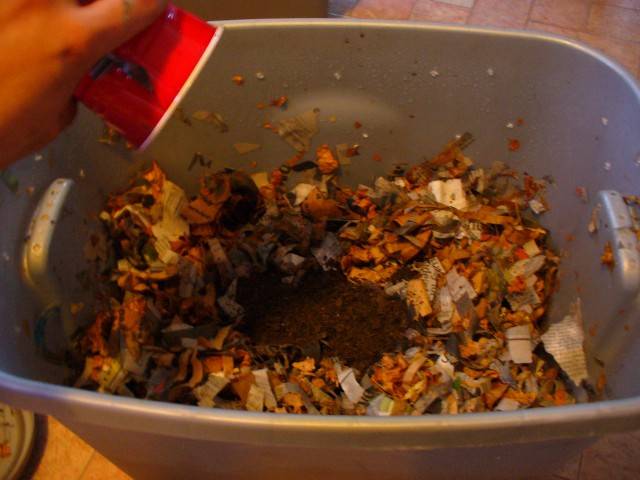
Put in some food scraps and
then add the Worms. I used apples and lettuce and put some bedding over top to discourage fruit flies.
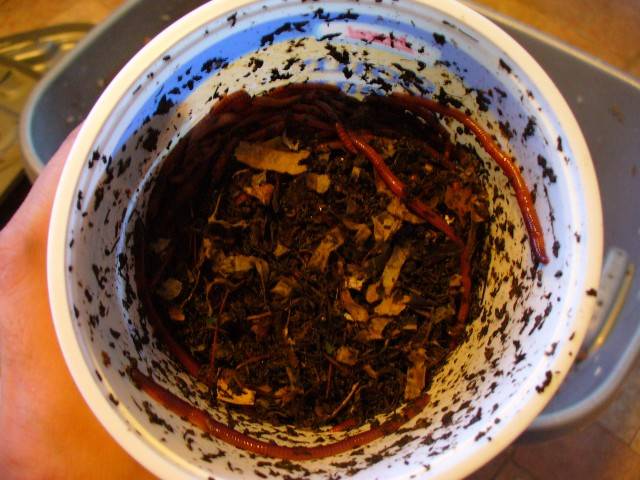
Then cover the worms with a layer of bedding.
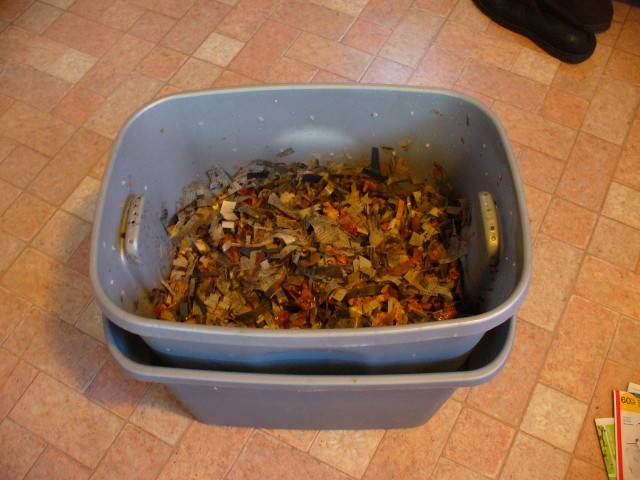
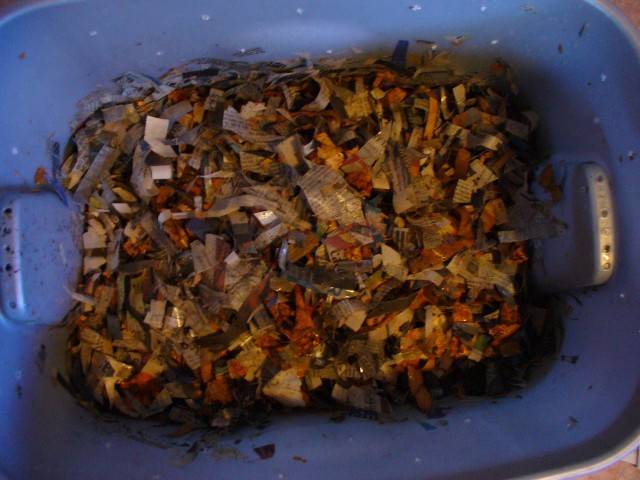
Your done! In six weeks you should be ready to start harvesting worm castings. That's will be another thread! Using a pound of worms, they should digest a pound of scraps in a day or 2. Mine I use straight veggies and fruits.
Good luck with your venture. If I missed something, jump right in.
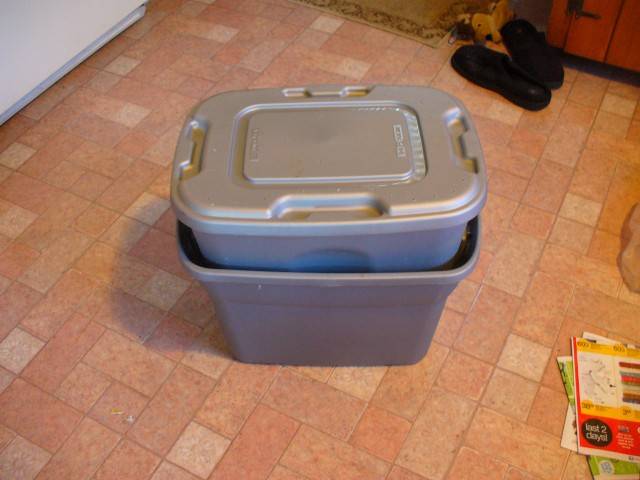
First, you will need a couple of bins for this set up. One bin for the vermicompost and one for the reservoir, I am using these 10 gallon bins I had around the house that I picked up for 2 dollars a piece on sale.
Next, you take a 1/8 inch drill bit and put in some air holes both in the lid and into the sides to ventilate the wigglers environment. You don't want the holes too big or the worms will migrate out of the bin.
Next, Put a few holes into the bottom of the top bin to allow drainage into the reservoir. Just a few now, or they will fall into drink.
Bin Complete!
Now put a couple of bricks in the reservoir and put the top bin into it and your ready to fill it up with some bedding.
The bedding I used was shredded newspaper, crumbled leaves, shredded cardboard, and you will need some dirt, a couple of cups full for the worms sake. The dirt is for the digestive system of the worm, They need the dirt to grind the food within the gizzard and as well as it supplies the bin with some beneficial microbes.
Get it all in all in there, right to the top. Then wet it all down. Worms need a moist environment since they transpire through the their skin. Not too wet now.
Then add the Dirt and mix it up!
Put in some food scraps and
then add the Worms. I used apples and lettuce and put some bedding over top to discourage fruit flies.
Then cover the worms with a layer of bedding.
Your done! In six weeks you should be ready to start harvesting worm castings. That's will be another thread! Using a pound of worms, they should digest a pound of scraps in a day or 2. Mine I use straight veggies and fruits.
Good luck with your venture. If I missed something, jump right in.





